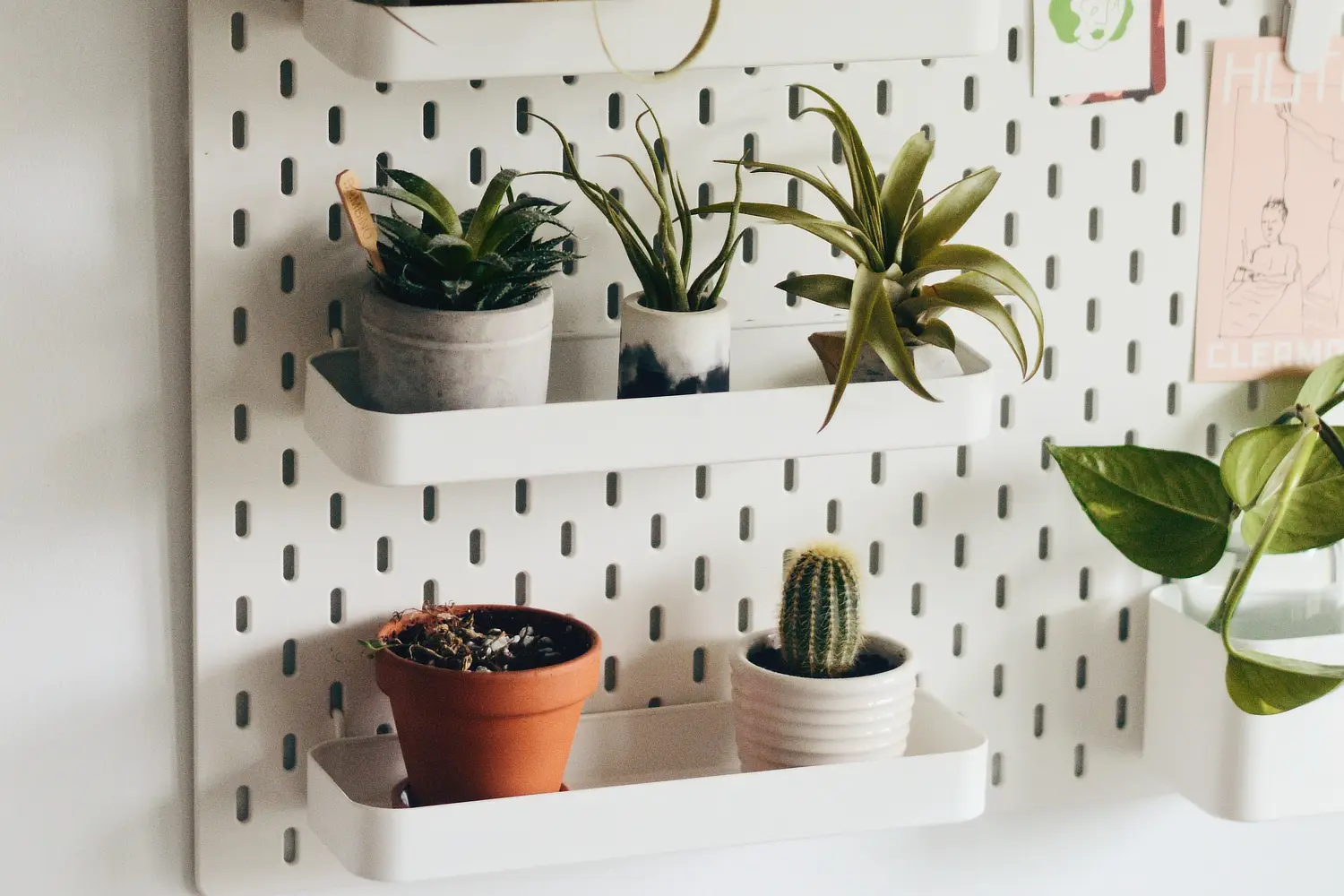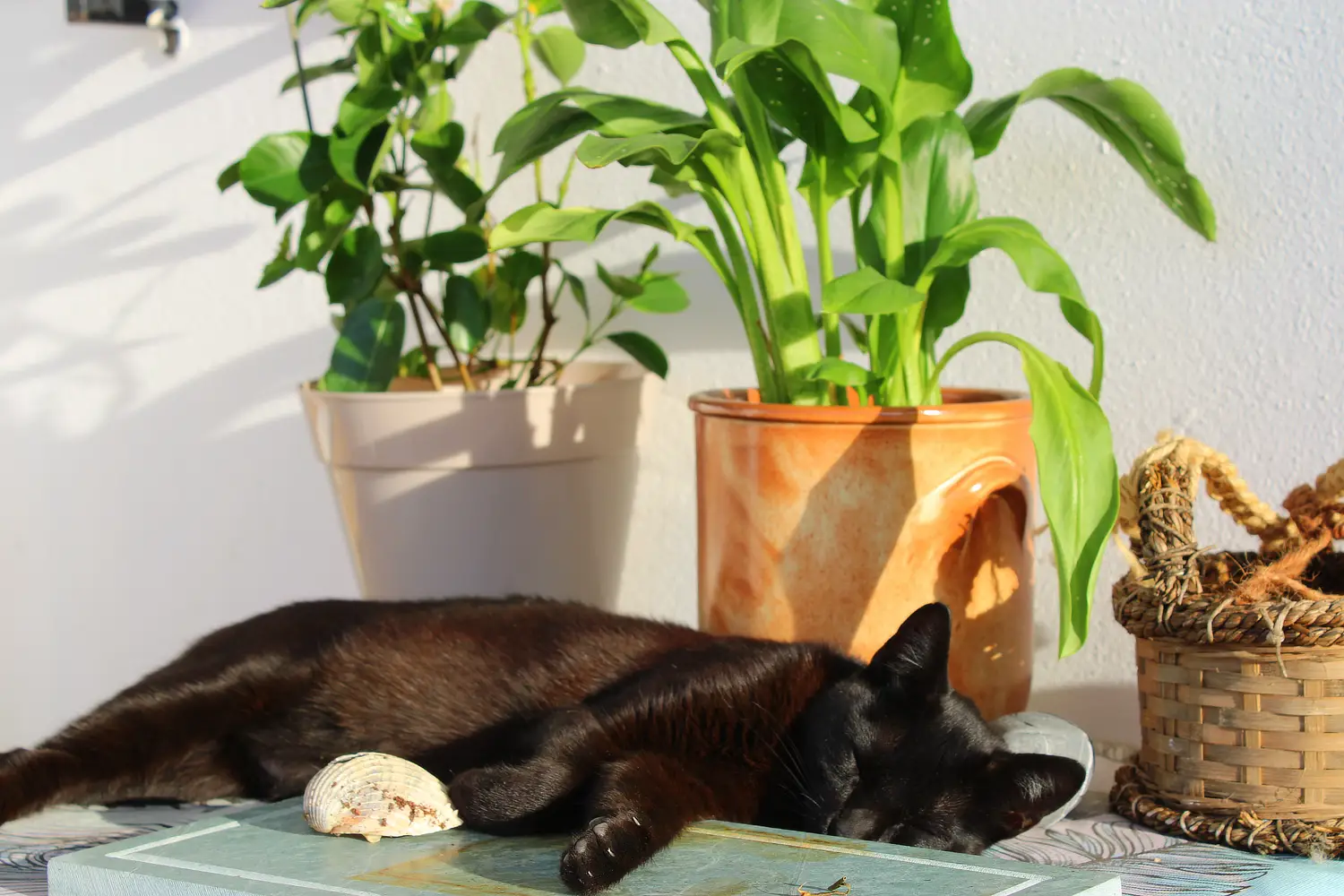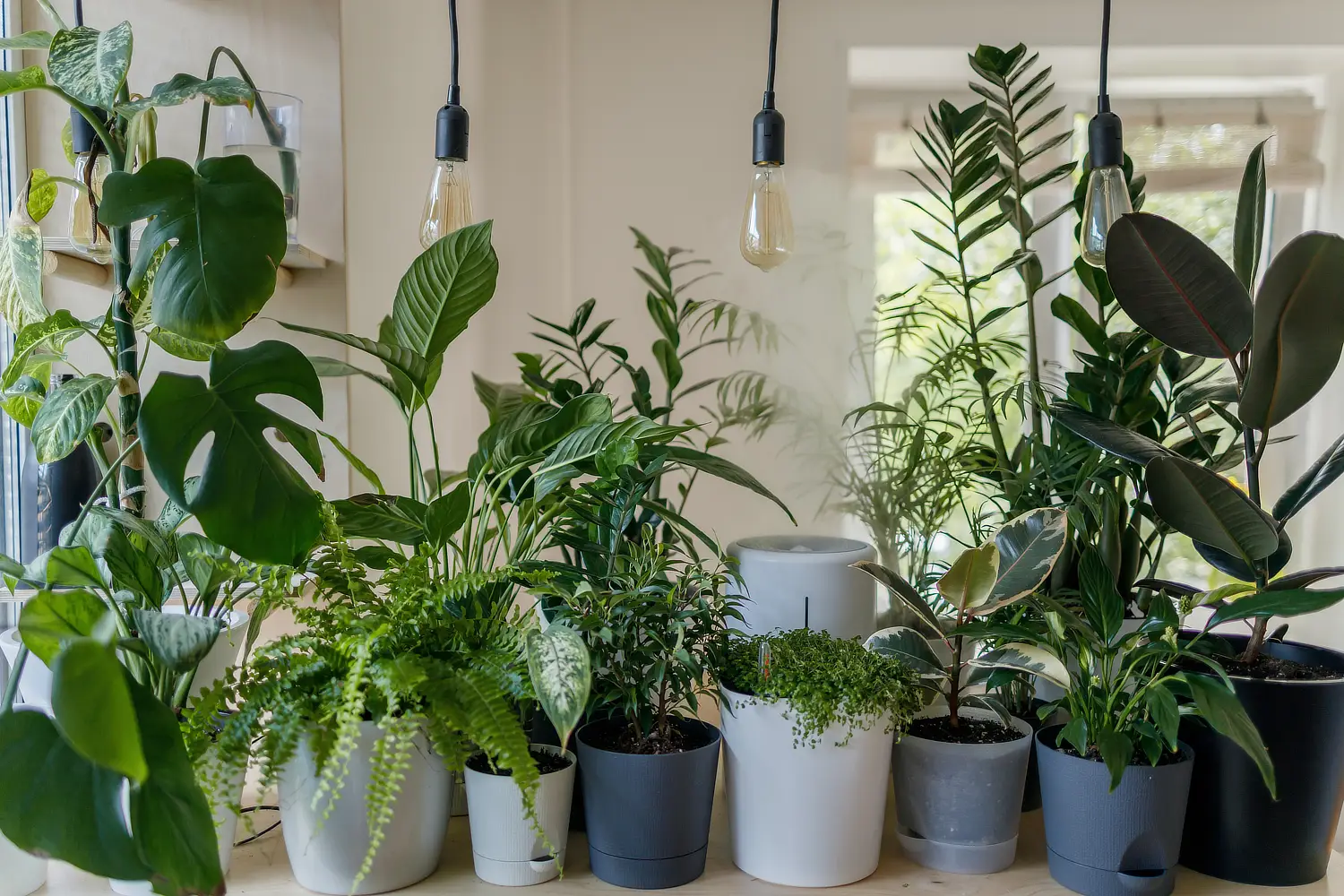With winter here we can still get our green fix by bringing our gardening inside and focusing on our indoor plants. Heating, cool breezes from windows and doors as well as changes in the amount we water can all stress our plants out which weakens them, and then pests arrive. Taking a little time out to re arrange your house plants, giving them a once over whilst you’re at it will really give them a boost.
Take a look at where your plants are positioned in your home and how the change in weather may affect them. As there is less light outside there will be less light inside so move your plants closer to a window to gain as much valuable sun as possible. Being closer to a window or door means they may be receiving a cold breeze, not the end of the world however it may dry your plants out so keep an eye on this and don’t expect to water less just because the temperature is cooler.
If next to a heater or under an air-conditioning vent, plants will be experiencing periods of hot breezes and fluctuations in temperature. This will definitely dry your plants out so move them to a more temperature consistent area and keep the water up to them.
When it comes to watering your houseplants most indoor ones get too much water, it’s in our nature to over nurture them. It does depend on the plants you are growing though, certain plants like consistent watering, others like to really dry out before getting a soaking so research what you are growing and what it likes. If you are still unsure or nervous buy a soil moisture testing kit, these get inserted into the soil and tell you when your plants need watering.
Even with the best care your indoor plants are suspectable to pests and due to the lack of rain, wind or predators these can escalate quickly as they are not removed by natural causes. In winter pest numbers are reduced out in the garden due to the cold but indoors it’s time to party so keep an eye on the following:
Scale insects are tiny sap sucking bugs that look like little round scabs on the surface of the leaf, the juveniles move around the plant but when they become adult, they get a waxy skin and stay put in one spot. These create a substance known as honey dew which brings in ants as they feed off it and can also be a cause of sooty mould. Removing the adults is easy – you simply pick them off and applying a horticultural oil such as eco oil or neem oil will work on the juveniles. White flies are similar to scale in the way they suck sap and distort the leaves of a plant, the juveniles look like baby scale insects too, but the adults become small white moth like flies. Like scale the best way to reduce the numbers is with a horticultural oil spray.
Mealy bugs are also a sap sucker and look like small white clumps of spider webs, almost alien like up close. A spray of water will dislodge them so take your plants outside and get the hose on them or do it in the shower. If you only notice a few a cotton bud dipped in rubbing alcohol will dislodge them with ease.
Spider mites are also a pesky pest indoors, these tiny and hard to see mites cause lots of webbing, they suck sap and leaves will also just discolour and fall off. They are very hard to remove completely so get onto any issues quickly by washing them off in the shower. If you have a bad infestation, isolate the plant or get rid of it completely to prevent them spreading to all your houseplants. As a preventative measure, spider mites do not like humidity so increase this around the plant by spraying with water on the underside of the leaves.
Keeping your plants clean is a great way to manually remove pests and dust as well as improving the appearance of your indoor plants and why not give them a good clean now whilst the garden is sleeping outside. I find the best method for most of my plants is the shower as it imitates rain so well, just keep away from extreme pressure and temperature.
For smaller delicate pants like ferns dunk them upside down in a bucket of water to rinse off dust, hold the pot in your hand to keep the root ball in the pot and simply swirl the foliage around in a bucket of water. Hairy leaves like violets can be cleaned with a dry clean paint brush as they do not like water on the foliage.
For larger plants that are hard to get to the shower like figs wipe with a damp cloth, ensuring you keep rinsing it off to keep the cloth clean. When wiping a leaf support the underside of the leaf so it doesn’t get damaged and try not to use oil or leaf shine as this can clog the pores of the plant.




